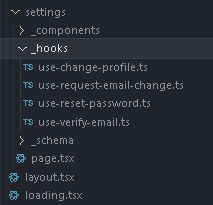Before we start…
What are Custom React Hooks Exactly?
At the heart of custom hooks lies the concept of reusability. You can encapsulate complex logic involving built-in React hooks (like useState and useEffect) into a custom hook function. This function can then be imported and used by multiple components, promoting code cleanliness and reducing redundancy.
Now, I saw a NextJS App build with a lot of Custom Hooks and few questions arrived in my mind.
Can we use custom react hooks in NextJS server components ?
Answer is No, React custom hooks that rely on browser functionalities like window or localStorage generally cannot be directly rendered on the server in Next.js. This is because these functionalities are not available in the server environment.
Here’s a breakdown of why server-side rendering (SSR) and custom hooks can interact differently:
SSR vs. Client-side Rendering:
In SSR, Next.js renders the initial HTML content on the server. This improves initial load performance and SEO.
Client-side rendering happens in the browser after the initial HTML is loaded. This allows for more interactive features.
Custom Hooks and Browser APIs:
Many custom hooks rely on browser APIs like window or localStorage to access data specific to the user’s environment.
The server doesn’t have access to these APIs, so hooks that depend on them will fail during SSR.
Solutions for Using Custom Hooks in SSR:
There are ways to handle custom hooks in Next.js for both SSR and client-side functionality:
Bridging the Gap: Strategies for Seamless Functionality
Here are some key strategies to ensure your custom hooks work effectively in both SSR and client-side rendering within Next.js:
Conditional Rendering:
This approach involves checking whether the code is executing on the server or the client. You can conditionally render parts of your component based on this information. This allows you to use hooks that rely on browser APIs only on the client-side, preventing server-side errors.
Data Fetching on the Server:
Next.js provides functions like getInitialProps and getServerSideProps that enable you to fetch data on the server before rendering the component. This data can then be passed as props to your component. With this approach, your custom hook can access the data on the server, avoiding the need for browser-specific APIs.
use client Directive (Next.js 13+):
The use client directive, introduced in Next.js 13, offers a more explicit way to handle client-side only hooks. By adding this directive at the beginning of your custom hook function, you clearly indicate that it should only be executed on the client, preventing errors during SSR.
Choosing the Right Approach
The best approach for using custom hooks in Next.js SSR depends on your specific needs. Here’s a quick guide:
Use conditional rendering when you have UI elements that rely on browser APIs and don’t need to be pre-rendered on the server.
Implement data fetching on the server if your custom hook logic requires data that can be fetched and made available during SSR.
Leverage the use client directive (Next.js 13+) for hooks that are purely client-side and don’t need to be executed on the server at all.
Remember:_ Custom hooks are a powerful tool, but keep in mind their potential limitations during SSR. By employing the appropriate strategies, you can bridge the gap and leverage their reusability benefits to build exceptional Next.js applications._
Hope you find this Article Helpful! Like and Share



